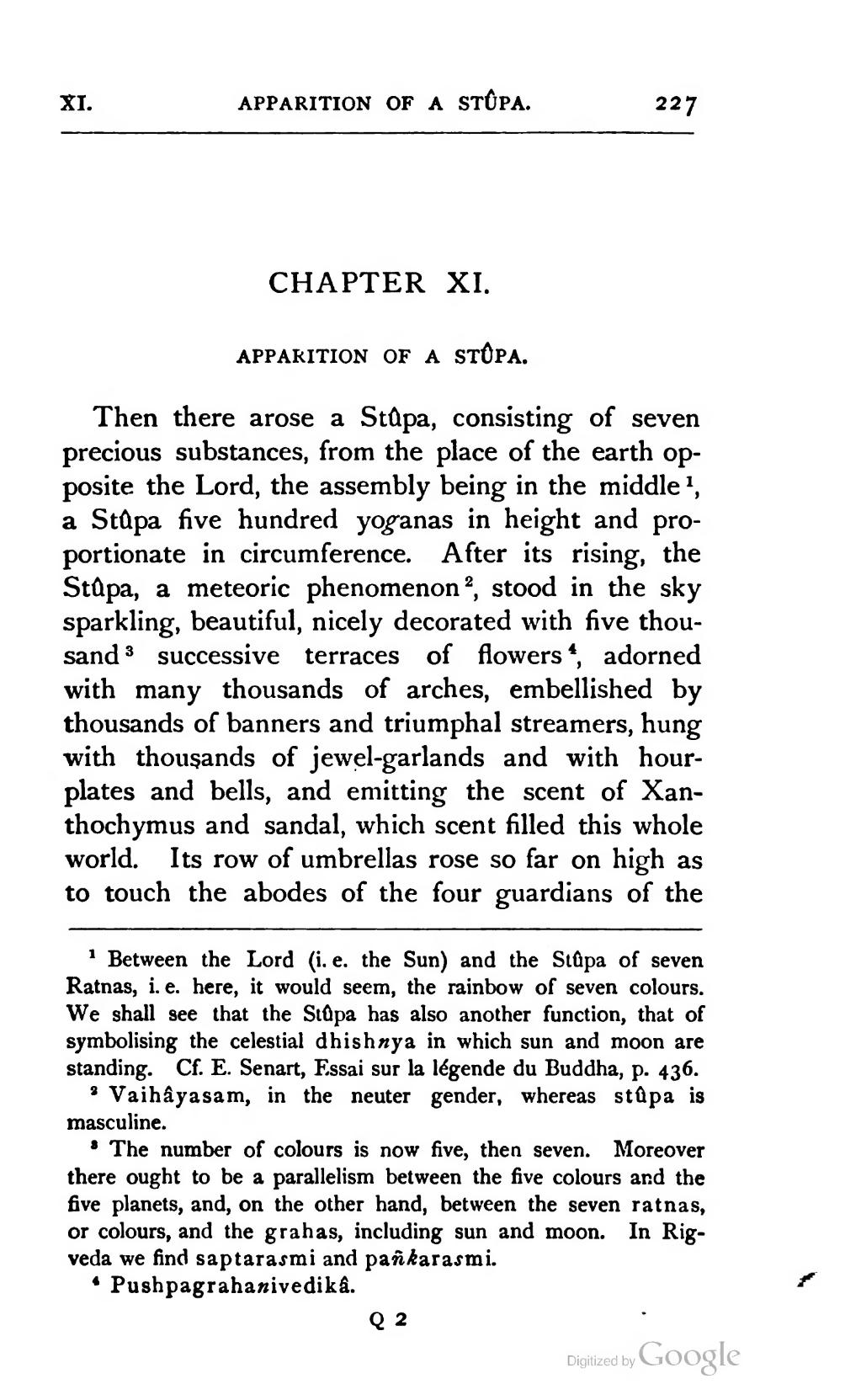CHAPTER XI.
APPARITION OF A STÛPA.
Then there arose a Stflpa, consisting of seven precious substances, from the place of the earth op- posite the Lord, the assembly being in the middle a Stflpa five hundred yo^anas in height and pro- portionate in circumference. After its rising, the Sttipa, a meteoric phenomenon 2 , stood in the sky sparkling, beautiful, nicely decorated with five thou- sand 3 successive terraces of flowers 4 , adorned with many thousands of arches, embellished by thousands of banners and triumphal streamers, hung with thousands of jewel-garlands and with hour- plates and bells, and emitting the scent of Xan- thochymus and sandal, which scent filled this whole world. Its row of umbrellas rose so far on high as to touch the abodes of the four guardians of the
Between the Lord (i. e. the Sun) and the Stupa of seven Ratnas, i. e. here, it would seem, the rainbow of seven colours.
We shall see that the Stupa has also another function, that of symbolising the celestial dhishwya in which sun and moon are standing. Cf. E. Senart, Essai sur la tegende du Buddha, p. 436.
Vaihdyasam, in the neuter gender, whereas stupa is masculine.
The number of colours is now five, then seven. Moreover there ought to be a parallelism between the five colours and the five planets, and, on the other hand, between the seven ratnas, or colours, and the g rah as, including sun and moon. In Rig- veda we find saptaraxmi and paw^araxmi.
Pushpagraha»ivedika
Q 2
